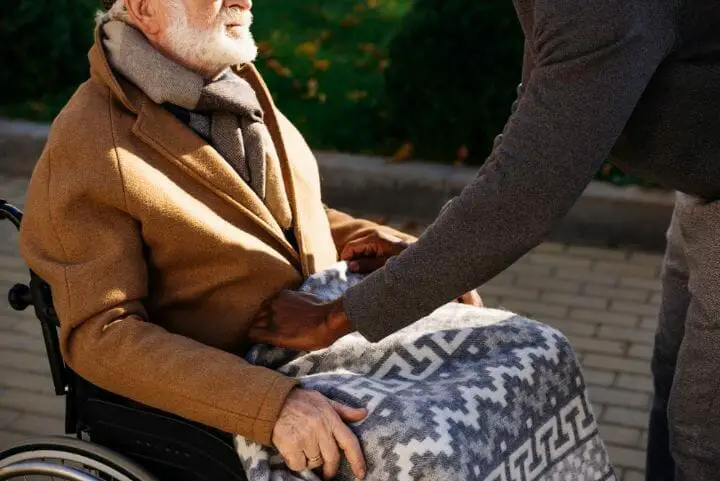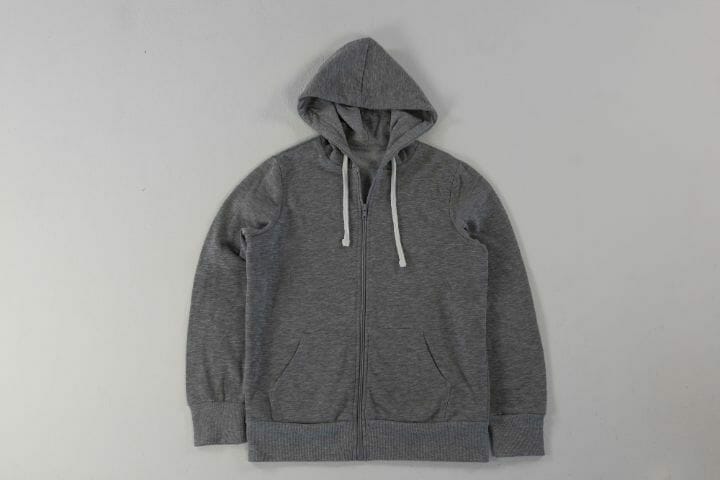Winters can be beautiful, especially, early mornings or evenings can be surreal. Who can blame you if you want to be outdoors to enjoy that kind of weather?
If you are planning to be out and about during the winter in your wheelchair, this article is for you.
Especially, if you are a power wheelchair user or if you use a manual wheelchair but have a full-time attendant, you would have thought about how to keep warm in a wheelchair.
For manual wheelchair users, propelling themselves involves a fair bit of physical activity, generating some body heat to keep you warm. However, if you are using the joystick to operate your electric wheelchair or have a caregiver, chances are that you are not up to a lot of physical activity.
In that case, you are not generating as much body heat and your body temperature can go southwards on a wintry morning or evening.
Well, let us see what you can do to keep warm in a wheelchair and at the same time, enjoy the chill out there.
Contents
How to Keep Warm in a Wheelchair: Tips
Wheelchair seat covers
Your wheelchair seat cushions as well as backrest, headrest, and armrests can be of leather or synthetic leather, which, unfortunately, is not the best heat retainer. In fact, during cold winters, the leather upholstery can be annoyingly cold and clammy.
And, of course, let us not forget the metal/alloy parts of your wheelchair, which will be icy cold in winter. This is why you should consider a wheelchair cover. The best materials for your cover can be wool or fleece.
You can either get a customized cover or buy a ready-made one. It is important to keep the dimensions of your wheelchair in mind while getting the cover.
While slightly larger dimensions of your cover will not hurt, a smaller cover will annoy you from time to time when you will come in contact with the cold parts of your wheelchair.
Also, you should make sure that the cover can be firmly attached to the wheelchair parts so that parts of it do not come off once you take your seat.
Keeping your head, neck, hands, and legs warm:
Hat / woolen cap: Depending on how cold a climate you are located in or are planning to visit, you may need headgear to keep your head warm. You should ideally use a good quality warm woolen cap. You may also use a hat, but it may come in the way when you rest your head on the headrest.
Scarf: A scarf will do the trick for keeping your neck warm even in very cold climates. Some good scarf fabrics can be fleece, blended wool, or soft woolly fabrics like cashmere.
Be careful to not use scarves made of abrasive materials or fabrics as these may cause skin tears or abrasions from long periods of use. If it’s not that cold, you can replace a scarf with a shawl, which will sit lighter on your neck and keep your torso warm as well.
However, shawls are rarely sufficient for the North American winters and are mostly used as a second layer over jackets; and can be dispensed with and stored away, if it becomes a little warmer than expected.
You may also like Gifts for Elderly Who are Always Cold
Gloves: This is a very important piece of clothing in your winter get-up. While your hands would long for the cozy comfort of your jacket pockets or would want to be under that shawl, they have to be constantly exposed to the cold.
Whether you have a power wheelchair or a self-propelled wheelchair, you need your hands to operate it – either one hand will always be on the joystick or both hands have to propel the wheels.
It is another matter if you have a full-time caregiver or attendant, but it will hard to get one if you want to enjoy the early winter mornings. Therefore, choose your gloves with care, they have the ability to make or break your experience.
Depending on how cold it gets in your region, you should be able to lay your hands on a pair of gloves, which is rightly suited for that weather.
Unless you are in a power wheelchair, it is also a good idea to select gloves for wheelchair users with sufficient padding which will save your hands from any injury and wear out from long periods of manually operating the wheelchair.
The second consideration, as per me, should be a good grip. Depending on your wheelchair, you would either be using the joystick or having a continuous grip on the wheels. In both cases, and especially for manual wheelchairs, it is of paramount importance that your gloves have sufficient grip.
Next, come flexibility and comfort. Your gloves should be like your second skin. They must let you perform all hand functions with ease and not be made of a rigid material so that you partially lose out on finger functions.
Also, all of us have come across gloves that lead to sweating of palms if worn for a moderately long time. This should be avoided as much as possible, by ensuring that the gloves are made up of breathable material.
If unfortunately, you have a disability that makes it difficult to put on and take off gloves, you should consider the use of woolen comfortable hand warmers.
They are a great substitute for gloves and your hands can then also go inside your jacket pockets or under the blanket, as it is likely that you are not operating your wheelchair yourself.
You may also like How to Keep Elderly from Falling Out From a Wheelchair
Leggings and Shoes: You should not ignore your legs. They can get a bit too cold for comfort as they hardly get any exercise when you are outdoors in your wheelchair.
While you may indulge in mild leg exercise or physiotherapy while still being on your chair, on its own it is not sufficient in cold winters. Consider wearing a pair of thick leggings under your jeans or trousers to ward off those snowy days/evenings.
Also, do not forget to round it off with a good pair of socks and shoes. If it’s snowy, consider a good pair of snowshoes with high ankles so that they can be put over your pants and snow or water does not go in.
Jacket (with a hood): Finally, for the torso, get a jacket that suits the current temperature. I mean, for most clothing or accessory, you may find it easy to take off, if it is a bit too much for the weather, but you may find it a bit difficult to get rid of your jacket if you feel too warm in it.
You must already have a pair of jackets, one for the coldest winters in your area and one for the milder ones. Take a good guess a to which one would be most appropriate for the day and time.
Whenever the decision becomes too difficult, I would suggest you take a warmer jacket! If your jacket has a hood, by all means, use it. It will mostly allow you to get rid of that woolen cap and, in all likelihood, the scarf as well unless you are in the middle of a snowstorm.
Blanket: You may also choose to carry a blanket (heavy or light depending on the cold). However, chances are that you will have to constantly mind it so that it does not slip off. Also, if you self propelling your chair or you are using the joystick it is all the more difficult to manage a blanket and keep it from falling off.
Possibility of Showers – Umbrella: Before going out, you should look up and see if it’s cloudy. If it is raining or snowing heavily mid-way through your outdoor trip, an umbrella for wheelchair will be really useful in keeping you dry and preventing that runny nose.
Heat pads: If you are carrying a muscle or joint injury and are wheeling into the cold, chances are that your pain is going to increase from the cold. One good way to prevent it from happening is to apply a heating pad on the affected area just before starting.
A better way is to carry the heat pad along or keep it applied on the joint or muscle as you move around. If it is a long outing, the heat pad will lose its heat after some time, but till that time it will ensure that your joint does not stiffen up and increase the pain.
You may also like Best Snap Front Robes for Seniors
Conclusion
If your wheelchair has good storage (most power wheelchairs have ample storage) it will allow you to take along an extra shawl or a cap or an umbrella, in case you find out the weather is a bit colder than you initially thought it was.
Finally, if you ask me, it is better to feel a bit warmer than comfortable than a bit colder than comfortable. The second scenario has more potential to make you fall ill. And therefore, it is best if you add that extra layer. Whenever in doubt, get that extra piece of clothing that may save your day. Go out and enjoy the weather!




